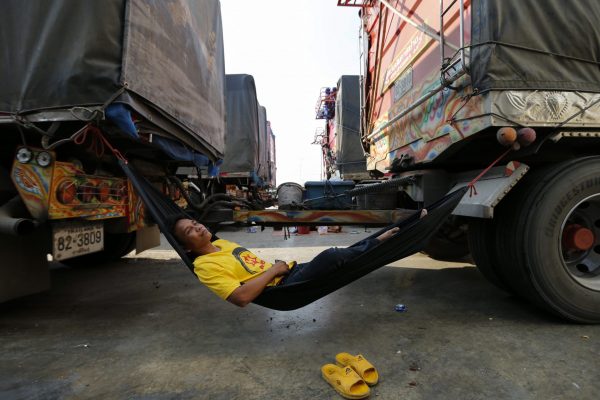Established at the height of the Cold War, ASEAN was entrenched around an understanding among conservative, anti-communist elites with at least some authoritarian sympathies. These elites accepted autonomy, mutual non-intervention, consensus on issues that required collective action and mutual restraint from the use of force as the basis for coordination, if not cooperation. Such commitments reduced tensions among member governments and enabled them to focus on consolidating domestic political authority, economic development and, where convenient, diplomatic cooperation.
ASEAN successfully carved out an area of steady economic growth and calm at a time when wars were raging in Indochina and when China was in the throes of the Cultural Revolution. As a result, external actors (including the major powers) accepted ASEAN prerogatives in Southeast Asia.
Riding on ASEAN’s Cold War successes, members consolidated the group’s position as East Asia’s premier regional organisation — due partially to the absence of similar arrangements in Northeast Asia. Other actors, including major powers like the United States, China and Japan, were therefore willing to accept ASEAN ‘centrality’ and its position ‘in the driver’s seat’ when it came to intra-regional cooperation.
These considerations characterised several ASEAN-focussed cooperation initiatives in East Asia between the 1990s and 2000s. They included the ASEAN Regional Forum, ASEAN+3, the East Asian Summit and the multilateral Chiang Mai Initiative for currency swaps after the 1997–98 Asian Financial Crisis. The 1990s also saw ASEAN expand to cover most of Southeast Asia with the incorporation of Myanmar, Laos, Cambodia and even Vietnam — the grouping’s former adversary.
The question for ASEAN now is whether its formula for success remains relevant. Finding common ground on pressing issues has become a growing challenge, the usual platitudes about solidarity and centrality notwithstanding. Recent efforts to manage disputes have had limited success, as demonstrated by the decades-long processes surrounding the Declaration of Conduct of Parties and the Code of Conduct over the South China Sea.
Even the handling of trade liberalisation, human trafficking, trans-boundary haze, over-fishing and large-scale human rights abuses within ASEAN have seen slow actual progress. That these issues intersect with the dynamics associated with the rise of China and the US–China rivalry further complicates matters, given the potential for division stemming from Chinese and US pressure.
ASEAN’s increased diversity makes the group more susceptible to stasis. Expansion in the late 1990s added members that are still shifting away from socialist economic planning and isolation. The founding members have greater economic sophistication as well as stronger ties to international capital and trade networks. Political change in the 1980s and 1990s removed Cold War-era authoritarian systems in Indonesia, the Philippines and Thailand, though not permanently in all cases. Leadership transitions now absorb political energies in Brunei, Malaysia and Singapore.
These cleavages distract from shared concerns and exacerbate difficulties in forging consensus on important issues. Resistance to reform among Southeast Asian political elites associated with ASEAN encumber how the grouping works.
Talk of a multi-speed ASEAN does not seem to have spurred the group to change. Perhaps expectations for reform are misplaced given that they may stand outside the original objectives for the group. If even modest shifts seem too ambitious, ASEAN’s contemporary and future roles are questionable.
Southeast Asian states wishing to advance a stable and predictable rules-based order may have to seek like-minded extra-regional partners. Whether through formal organisations or ad hoc agreements, improving coordination and lowering transaction costs over any issue area will entail compromises on autonomy and limits to parochial interests. Such demands are unlikely to win consensus within ASEAN.
Middle- and high-income Southeast Asian states like Indonesia, Malaysia and Singapore that benefit most from these approaches may have to look for partners in developed economies nearby that share similar perspectives. Candidates include Australia, Japan, South Korea and, in some areas, Taiwan.
New regional initiatives need to be credible and independent. Avoiding the suspicion of simply being a front for either China or the United States is crucial for any arrangement given Beijing and Washington’s inconstancies and sharpening rivalry. Experiences from the Five Power Defence Arrangements, the Comprehensive and Progressive Agreement for Trans-Pacific Partnership, the Trans-Pacific Strategic Economic Partnership, and even ASEAN when successful, may be instructive.
Despite a good run for half a century, ASEAN now faces the risk of redundancy because of its inability and perhaps unwillingness to address its own limitations. Pressing issues like US–China rivalry, economic cooperation, environmental problems and common security concerns will not wait for ASEAN and its members to get their house in order.
Unless ASEAN can prove itself more adept at handling such contemporary challenges, Southeast Asian states seeking to play an active regional role may have to supplement some of ASEAN’s current responsibilities. Some diminution of ASEAN’s prominence may be worthwhile for it members if other regional platforms can help them pursue their interests more effectively.
Ja Ian Chong is Associate Professor of Political Science at National University of Singapore.
This article appeared in the most recent edition of East Asia Forum Quarterly, ‘Why ASEAN matters’.


The idea that ASEAN has ‘reduced the possibility of war’ is a common but unsupported claim for backers of the organisation. Of course such a statement can’t be verified because we don’t know what might have happened (or not happened) in the absence of ASEAN during the past half-century.
A more important and observable measure is the way it has failed in the Rohingya crisis. ASEAN is still promoted in Indonesia as it was during the Soeharto anti-Communist era as world-shaping power for freedom though there are now Communist states among its members, along with military dictatorships, pseudo-democracies and a Sultanate. The only common core is geography.